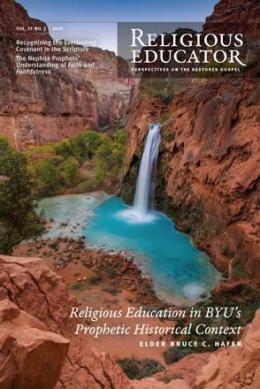Awakening to a Life of Discipleship
Editor's Note
In 1986, Elder Neal A. Maxwell (1926–2004) challenged himself and his audience at Brigham Young University: “For me, the Book of Mormon is like a vast mansion with gardens, towers, courtyards, and wings. My tour of it has never been completed. Some rooms I have yet to enter, and there are more felicitous fireplaces waiting to warm me. Even the rooms I have glimpsed contained further furnishings and rich detail yet to be savored. . . . Yet we as Church members sometimes behave like hurried tourists, scarcely venturing beyond the entry hall.”
More than three decades later, this issue of the Religious Educator takes up that tour, seeking to venture beyond the entry hall of the Book of Mormon to explore additional aspects of its rich interior. Articles analyze the meaning of God’s everlasting covenant, a topic the title page of the Book of Mormon itself outlines as a primary theme. Others explore the teachings of Book of Mormon prophets regarding faith, Alma’s use of Hebraistic idioms, and stories of leadership, followership, and repentance. Finally, professors converse about how they engage in a faithful way with this text in the academy, while Elder Bruce C. Hafen, emeritus General Authority and the biographer of Elder Maxwell, recounts the history of religious education in the Church.
I return to Elder Maxwell, who concluded his talk with this plea: “May we come to feel as a whole people beckoned beyond the entry hall. May we go inside, far enough to hear clearly the whispered truths from those who have slumbered, which whisperings will awaken in us individually a life of discipleship as never before.”[1]
Scott Esplin
Editor in Chief
Notes
[1] Neal A. Maxwell, “Great Answers to the Great Question,” BYU Speeches, 11 October 1986; see also Neal A. Maxwell, Not My Will, But Thine (Salt Lake City: Bookcraft, 1988), 33.
.
